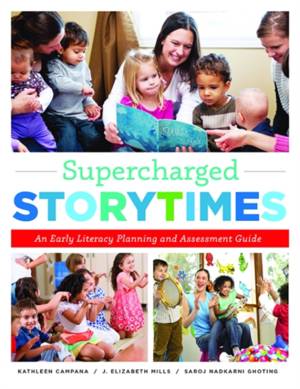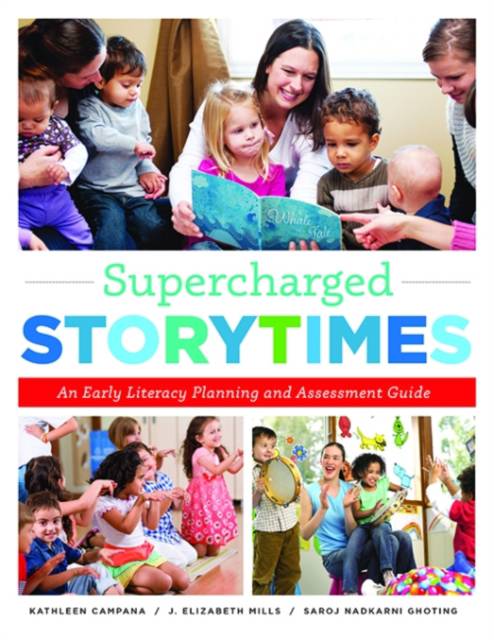
- Afhalen na 1 uur in een winkel met voorraad
- Gratis thuislevering in België vanaf € 30
- Ruim aanbod met 7 miljoen producten
- Afhalen na 1 uur in een winkel met voorraad
- Gratis thuislevering in België vanaf € 30
- Ruim aanbod met 7 miljoen producten
Zoeken
Supercharged Storytimes
An Early Literacy Planning and Assessment Guide
Kathleen Campana, J Elizabeth Mills, Saroj Nadkarni Ghoting
Paperback | Engels
€ 93,45
+ 186 punten
Omschrijving
Based on the groundbreaking research of VIEWS2-the first systematic study of storytimes done to date-this book recommends simple interactive ways to emphasize early literacy techniques and encourage children to use and practice their pre-reading skills while preserving the delight inherent in storytime. And unlike many other storytime resources, the authors use the findings of VIEWS2 to offer guidance in performing assessment, as well as giving tips for planning and conducting storytimes. Put simply this book assists storytime presenters, children's librarians, and others involved with early literacy by presenting ready-to-use planning tools based on early learning benchmarks with a clear focus on developmental stages; demonstrating how to foster early literacy development by inserting the VIEWS2 early literacy domains into the five practices from the second edition of Every Child Ready to Read(R) @ your Library(R); interweaving testimonials from storytime practitioners throughout the text to provide real-world insight; showing how storytime presenters can connect with parents and caregivers to promote family engagement; providing guidelines, worksheets, and recommendations for storytime assessment, with particular attention to self-reflection and peer-to-peer community learning; highlighting professional development resources that encourage sharing and problem-solving within the larger community of children's and youth librarians; and providing administrators with research-based evidence that supports current and future advocacy for early literacy in public library programming for children. Using this book's systematic approach, readers will be able to plan their storytimes with a clear idea of what to look for in the children they serve, and then continually improve how they meet the needs of their communities.
Specificaties
Betrokkenen
- Auteur(s):
- Uitgeverij:
Inhoud
- Aantal bladzijden:
- 184
- Taal:
- Engels
Eigenschappen
- Productcode (EAN):
- 9780838913802
- Verschijningsdatum:
- 10/05/2016
- Uitvoering:
- Paperback
- Formaat:
- Trade paperback (VS)
- Afmetingen:
- 216 mm x 279 mm
- Gewicht:
- 458 g

Alleen bij Standaard Boekhandel
+ 186 punten op je klantenkaart van Standaard Boekhandel
Beoordelingen
We publiceren alleen reviews die voldoen aan de voorwaarden voor reviews. Bekijk onze voorwaarden voor reviews.








